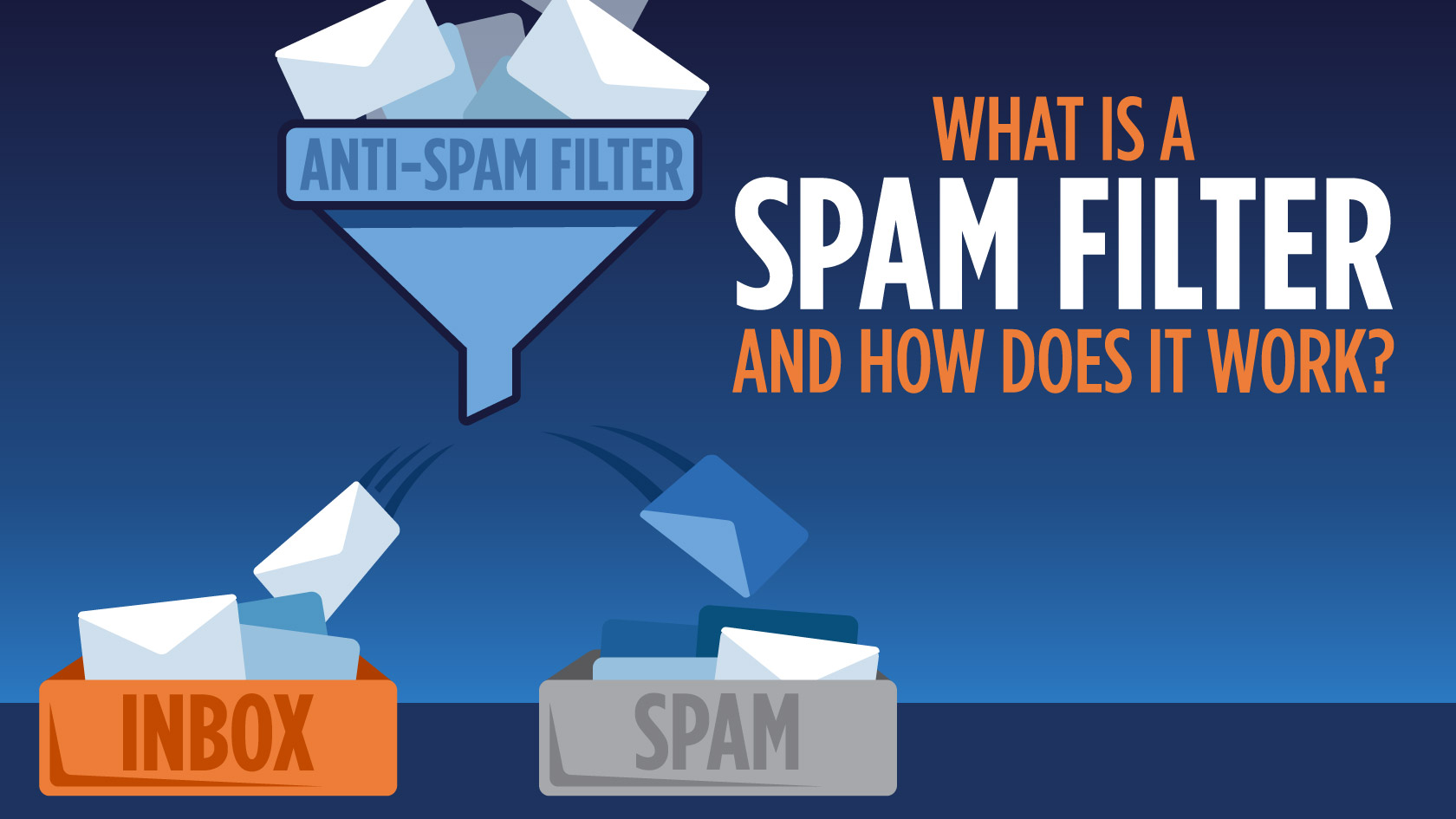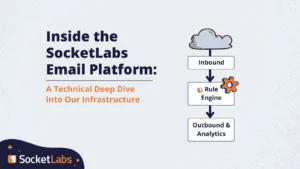
Now, more than ever, spam filters are an increasingly present part of the email delivery process. Spam filters are smarter and more robust than ever before. Unfortunately, much of the information circulating about what spam filters are and how they work isn’t always accurate. You have probably read a blog where the author will give you the “best tips and tricks to avoid the spam filter.” In reality, there is no avoiding the spam filter. No matter how you send an email, or what it looks like, it will almost always pass through a filter that determines its fate. Whether it lands in the inbox, the spam folder, the promotions folder, or the social folder, your mail will inevitably go through some sort of spam filter.
While you have no control over whether or not your email is filtered, you DO have control over what folder your email will land in after it filters – an important distinction that will play a large role in the success of your email.
What is a Spam Filter?
The first step to maximizing the success of your bulk email is learning what a spam folder is and how it works. Rather than fearing spam filters and making them your enemy, you need to make them a tool to be used to your advantage. The more you know about how a spam filter works, the more of an edge you will have on your competition.
Truthfully, a spam filter is hard to define, as there is no singular spam filter that judges all email across all mailbox providers. Rather, each mailbox provider, company, and individual user can have their own configurable devices, software, algorithms and/or machine learning technology that will act as their spam filter. No matter what the spam filter looks like or what technology it uses, they all serve the same purpose of dissecting email and separating the good from the bad.
Why do Spam Filters Exist?
Spam is obviously an annoyance to anyone who is on the receiving end. But doesn’t it seem like spam is the recipient’s problem? Why do mailbox providers like Gmail care if you get a spam message? After all, it’s free to use Gmail, why would they invest millions to develop these highly complex and intelligent filters?
- Mailbox providers want you to use their product. The more users a mailbox provider has, the more money they can make. If users have the best, spam-free experience with Gmail, they will stick to Gmail as their primary mailbox provider.
- Spam is potentially dangerous. A big reason that it is so important for spam to be filtered is because it can contain malicious content that can spread viruses and cyber attacks. One email can very easily take down a large corporation, so businesses need the best security they can get. The mailbox provider with the best security will be the obvious choice for most companies.
Spam Filter Categories
Generally knowing what a spam filter is looking for at a high level can be a good way to improve your email deliverability all around. But before going deeper on that topic, it also helps to know the different categories of spam detection systems that your email may encounter. As you will see, the following three categories of spam detection systems are generally based around where they exist in the email sending process.
Gateway Spam Filters
A gateway spam filter typically sits behind the firewall of a network, looking for any email threats that are coming in to the network. Typically gateway filters will be physical hardware located on-premise in servers rather than being stored in the cloud. The idea of a gateway server is in the name. Mail must make it through the “security gate” before making it to the company’s network. A popular example of a gateway filter is the Barracuda email security gateway.
Hosted Spam Filters
Unlike a gateway spam filter, a hosted spam filter is typically based within the cloud. A hosted spam filter can be active before the email gets in to the network similar to a gateway filter, or it can be used inside an organization’s network. These spam filters work similarly to gateway spam filters, spotting any potentially malicious inbound email or spam. One benefit of cloud hosted spam filters is that they can be quickly updated with the latest software allowing for customers to always have the most up-to-date product. Hosted spam filters are typically run by third parties and offer subscription services. An example of a hosted spam filter is SpamTitan.
Desktop Spam Filters
Desktop filters are user-installed and are typically downloaded locally to their computer. A benefit of desktop filters is that they can be configured by the user to allow the most appropriate filtration techniques that are specific to their needs.
Main Types of Spam Filters
Within these general categories of spam detection systems, there are different types of spam filters. While the category of filter refers more to where the filter exists, the types of filters speak more to what the filter is actually looking for.
Content Filter
Content spam filters know what classic traits to look for in the header and the body of an email. The header of an email provides useful information like the recipient address, the return address, stops the email made at different servers, and much more. A content filter can use the header information to make sure the sender isn’t on any blacklists, or look for any suspicious stops the email made on its way to the recipient. Anything that could be an indication of spam in the header will be thoroughly processed by a content filter before making it to the recipient’s inbox or spam folder.
Aside from the header, a content filter will check for suspicious content in the actual body of the email like trigger words or images that are consistent with spammers. Regardless, of where the content sits, anything that looks like it could be consistent with spam will be spotted and filtered.
In the body of an email, filters can be sensitive to the words you use, the pictures, and everything in between. There is such a fine line between good and bad content in the eyes of a content filter that perfectly legitimate senders often get caught in these filters for simple mistakes. Three important things you should consider when making your content:
- Your content should not be contained entirely in an image; have a good image to text ratio
- If it’s a bulk commercial message, then it must include a valid physical business address and a clear, conspicuous unsubscribe method to stay compliant with CAN-SPAM
- Ignore any outdated advice you read about avoiding spam trigger words such as “toll-free”, “dear friend”, “risk free”, “special offer”, etc. Spam filters today are more sophisticated than they used to be, so even if “spammy words” are contributing to your overall spam score with a particular spam filter, the impact on your deliverability will be very small as long as the use of those words is not triggering spam complaints from recipients.
Rule-based Filter
A rule-based filter allows for the filtration of certain email based on a predetermined criteria. For example, maybe the user will block messages from a certain sender or messages with certain words in the subject line or header. A rule-based filter is exactly what it sounds like; it follows the rules that you determine.
Bayesian Filter
A bayesian filter is a filter that learns your spam preferences. When you mark emails as spam, the system will note the characteristics of the email and look for similar characteristics in incoming email, filtering anything that fits the formula directly in to spam for you. A bayesian filter is one of the most intelligent types of spam filter because it is able to learn and adapt on its own.
These spam filter categories and types are just a few examples of many that exist. Spam filters come in all shapes and sizes and are often used in combinations for added security. This means that a company can use a hosted filter with a desktop filter that includes content and bayesian filtration. Because these filters can get so complex, it’s more important than ever to make sure your mail is following all of the email best practices. To learn more about email deliverability best practices, read our deliverability guide.
How to Avoid the Spam Folder
As technology around spam filtration increases, it will be more difficult for your legitimate email to make it to the recipient’s inbox. One small mistake can lead to a snowball of issues down the road. This is why it’s so important to learn about what spam filters are and how they work. Making spam filters a tool to be used to your advantage will help you build a successful email platform that out-performs your competitors.
If spam filters are working against you, read our blog on the top 5 reasons your email is landing in the spam folder.







